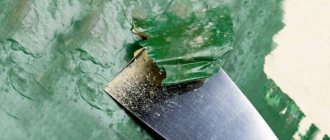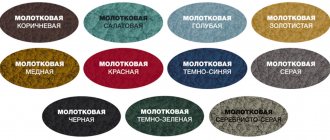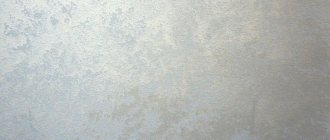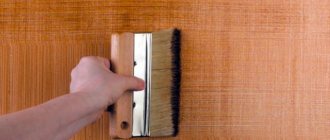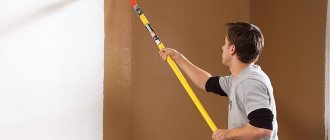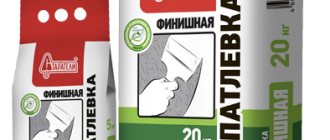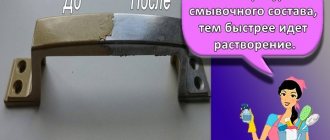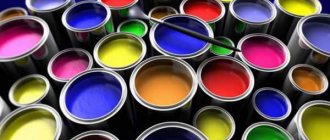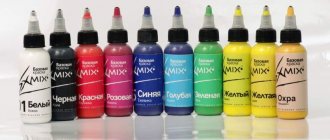There are a large number of finishing materials on sale. If there is a need to seal the walls without lengthy leveling, then you can choose structural paint, which helps to obtain an interesting relief coating on the surface. It belongs to new materials and looks impressive. The features of the coating will be discussed below.
What kind of material is this
In addition to the name structural paint for walls, there are others - textured, relief. The reason for these names is the effect obtained on the surface after application, it becomes embossed, and selected patterns are created that are voluminous. Such tools help to obtain various options for structure on the surface. You can imitate various natural materials - wood, brickwork, fabric and others. Structural painting of walls can be used on different bases:
- Concrete;
- Asbestos-cement;
- Plasterboard sheets;
- Brick;
- Chipboard, wood;
- MDF panels;
- With and without a plaster layer.
The method for obtaining this effect is simple; you can paint it yourself.
You can imitate various natural materials - wood, brickwork, fabric and others.
What is it?
Structural paint is a finishing decorative material. It contains a large number of features. This is, for example:
- Due to its great ability to transmit steam, paint does not interfere with the process that regulates the level of humidity in the room. This suggests that this type is ideal for interior decoration.
- This material is very resistant to exposure to precipitation. It can be safely used to decorate facades without worrying about it being washed off by rain or fading in the sun.
- It can be used for quite a long time - about four years.
- You can choose absolutely any color you need.
- The dye has an original chemical structure and texture. When working with it, an original and unique surface is created.
But besides its advantages, it also has disadvantages. The disadvantage is the relatively high cost of this type of paint. But this is not scary either, since you need to paint with structural paint in one layer, and this means that a large amount of raw materials for finishing is not needed.
Features of structural paint
Paintwork is used not only to cover up the imperfections of the base, which was not carefully leveled. But it is chosen to obtain an original coating that will look beautiful and can be used for different interiors. Such tools will help realize a variety of design ideas.
A wide range of these paints is valued by professionals for their ability to be combined with different interiors. You can apply painting on the facade, and indoors on the walls and ceiling.
Paintwork materials are chosen to obtain an original coating that will look beautiful and can be used for different interiors.
The difference between structural paint and regular paint
The main distinctive features of the textured type of paintwork materials are the composition of the product, which helps to obtain texture. Small fractions of various materials are used here, it can be sand, marble chips, etc. It depends on what kind of coverage they want to get. And of course, the layer will not be smooth or matte, but voluminous, it is for this property that many people love this type of finish.
The main distinctive features of the textured type of paintwork materials are the composition of the product, which helps to obtain texture.
The difference between texture paint and regular paint
Structural paint has two main differences compared to regular paint:
- compound;
- appearance.
The additives included in the composition (synthetic fibers, fine and coarse quartz sand, stone chips, scales, etc.) create texture on the surface. A painted wall can imitate marble, velvet, matte coating, crocodile skin, linen, or wood.
Structural paint with velvet effect
Advantages and disadvantages
Painting walls with structural paint has pros and cons. Among the advantages:
- environmental friendliness;
- wear resistance;
- resistance to differences in low and high temperatures, exposure to ultraviolet rays;
- resistant to moisture (only those containing an antifungal base);
- obtaining any color and shade;
- interesting relief;
- a wide range of;
- does not absorb odors;
- hide irregularities;
- easy to care for.
Pay attention to: Enamel XB-124, features and rules of use, technical characteristics and composition.
Disadvantages:
- high price;
- Application skills required;
- When applying an additional layer, it is necessary to remove the first one.
Advantages and disadvantages of structured paint
Structural enamel is often chosen instead of decorative plaster compositions, wallpaper and natural materials; they are imitated with paint. This decision is associated with the positive aspects of the product, which experts note:
- Applying the product is convenient and simple;
- Quick drying;
- Withstands exposure to ultraviolet radiation and does not lose brightness;
- Not impregnated with dirt, moisture, odors;
- Easy to clean;
- Non-abrasion coating;
- You can use detergents for cleaning;
- Withstands changes in temperature and fire;
- Vapor permeable layer;
- Suitable for rooms with high humidity;
- Can be used for indoor and outdoor work;
- There is no need to thoroughly prepare the surface;
- Ability to cover minor surface defects;
- Strength and elasticity;
- Wide range of colors; it is possible to paint the layer with acrylic compounds to update the color.
Among the disadvantages, we can note the need to study the method of painting; removing the coating will be difficult; grinding the surface is required. They also note the high price for paint.
Can be used for indoor and outdoor work.
Types of structural paint
Structural paint for plastic and other surfaces may vary in the components used for production. There is a mineral type, based on the addition of cement and lime, usually they are chosen for facade coating.
With a base made of vinyl or silicone, suitable for any substrate, with the exception of painting furniture parts. Using acrylic, they are versatile and can be used for different purposes and reasons.
There are options that create a rough base on the surface. For textured effects, add a variety of elements. You can get an imitation of velor, leather, marble and other materials. There are options that are sold in cans, but usually sold in plastic buckets.
For textured effects, add a variety of elements.
Advantages of structural paint
- Widest design possibilities. The base of this paint is usually white, which means that it can be tinted in a variety of ways. As a result, you can get a spectacular relief wall without the need to cover it with decorative plaster;
Important! If it is necessary to change the color on an already painted surface, this can be done using ordinary acrylic paint.
- Vapor permeability. You can paint walls in which this parameter is at a high level and not be afraid that the layer of paint will retard the natural air exchange in the wall;
- The opportunity not to waste time and money on perfectly preparing the wall for painting. Structural paint is quite dense and can be applied in a fairly thick layer. This makes it possible to mask the unevenness of the surface being painted, if they are not too large;
- High moisture resistance. This quality makes it possible to use paint in places with high levels of humidity, as well as to successfully remove dirt from the painted surface. The surface does not absorb water, which means that dirt also does not eat into it;
- Suitable for external use. Textured paint is resistant to external influences, ultraviolet radiation and temperature changes;
- Completely environmentally friendly. The paint does not contain harmful substances, and they are not released into the atmosphere under any conditions. Moreover, the composition is hypoallergenic.
Preparing the wall
As mentioned earlier, there is no need to thoroughly prepare the wall, but if large defects are noticed, they will need to be eliminated. The walls are plastered and primed so that there are no large irregularities.
You also need to dilute the paint with pigment; such products are sold only in white. Therefore, a dye of the desired color is purchased.
The resulting shade is checked on an inconspicuous area before painting; after drying, the layer usually becomes lighter, so you need to evaluate the result.
The product can be applied using rollers, brushes, or a spray gun; the choice is made based on the task at hand.
It is necessary to dilute the paint with pigment; such products are sold only in white.
Application methods
The option for obtaining relief is selected at the time of purchasing the paint itself, the effects are written on the packaging, and they are obtained thanks to the components included in the composition. But texture correction is possible; the methods described below are applicable:
- A brush can help you get a unique coating if you move chaotically and spread the layers widely. You can simplify the process by making a standard layer, which is then chaotically adjusted;
- You can also get different relief with a roller; it varies depending on the type of material and the length of the pile;
- Using sponges, the work will take a long time, but the coating will turn out beautiful. The tool is used to tap the wall to obtain a unique pattern; the pattern depends on the texture of the sponge; there are special sponges for this purpose;
- The spatula, as with the brush, moves chaotically, the stripes will turn out different, think about the option in advance in order to purchase a spatula of the right size.
The option for obtaining relief is selected at the time of purchasing the paint itself; the effects are written on the packaging.
What is it and scope of application
Structural or textured paint is used to paint the façade of a house, interior walls, and ceilings. With it, you can give even uneven surfaces an interesting ornament, which over time will not change its original appearance. This is due to the high viscosity due to the polymer particles with adhesive properties included in the aqueous dispersion. Apply with a roller, brush and spatula, forming a pattern. After this paint dries, a protective film forms on the painted surface. Prevents the destruction of the painted material and extends its service life.
Structural paint on the facade of a house
Application technique
According to the technology of work, there are several stages that must be carried out for high-quality painting. So you need to do the following:
- Plaster the base, when the layer dries, apply a primer solution that will improve adhesion, and also wait for the layer to dry;
- LMB is being prepared;
- It is better to apply the product to small areas, after which you can create the desired pattern, otherwise the area will dry out and you will not be able to correct the effect.
It is better to apply the product to small areas, after which you can create the desired pattern.
Terrain Tools
The imagination of designers helped to achieve different effects using relief types of paints. The tool is important for the task at hand. Brushes and relief rollers can be used, where the pattern is immediately visible. A spatula is also suitable. Various sponges, paper or newspaper, which are well crushed, to treat the surface for a patterned coating. In addition, by winding a rope around a roller, you get an unusual layer that is similar to a bamboo pattern.
By winding a rope around a roller, you get an unusual layer that is similar to a bamboo pattern.
Structural paint painting process
If this is your first time encountering this material, then you will be faced with the question: how to apply structural paint? There is nothing complicated in this process. First, you have to prepare the surface where it will be applied. Let us remind you that this type of dye can be used for both interior decoration and facade work.
Next we will talk about the painting process itself. The surface must be clean and dry before a coat is applied. If you paint over old paint, you should expect that the old finish will crack or peel. So, these defects need to be removed using a metal spatula. The old layer must be made matte using sandpaper. Treat this circumstance with great responsibility, the overall result depends on it.
You can also remove old dye from the surface using a hair dryer. This method is quite fast and convenient, but it will leave an unpleasant burning smell.
If you notice fungus on your wall, be sure to remove it using a mechanical method, that is, manually without the help of chemicals. And after removing it, treat the surface with an antifungal agent.
One of the rather pleasant features of structural paints is that with their help you can hide any defects in your surface. This is because this type can be applied to the wall in a very rough layer. If, of course, the defect is very large, then fill the unevenness before painting.
Video on how to apply this material:
Before painting, it is important not to miss another important point - priming the surface. In order to apply the primer, it is best to use a roller. If there are places that are very difficult to reach, then a brush will also come in handy.
How to make your own structural paint
It is possible to prepare a similar composition yourself, this will save money. The base will be acrylic paint, to which sand, granite or marble chips are added, for this they need to be well-ceiled. But it is easier to purchase them on the construction market. Additional elements are introduced into the paint until a homogeneous mass is obtained that does not differ in thickness.
Additional elements are introduced into the paint until a homogeneous mass is obtained that does not differ in thickness.
Structural paints can be used on a variety of substrates to create wall finishes that are stylish and unusual. Beginners can also apply them; it is important to adhere to the principle of operation and choose the right tool. If you want to save money, you can make the composition yourself; for this purpose you will not need to look for many components.
Basic information
In general, there are no big differences in terms of composition with conventional paints. One of the few differences that makes structural paint so attractive is the filler. The latter is decisive in the appearance of the applied paint coating.
Types of structural painting
First of all, paint differs according to the types of fillers. There are currently four options here:
- Mineral filler. The latter is lime or cement. The composition is sold dry and diluted with water to the consistency required for use. Mainly used in exterior work, such as facade finishing;
- Acrylic filler. Sold ready for use and distinguished by its ability to adhere firmly to any surface;
- Silicate filler. Mainly used for finishing mineral surfaces such as brick and concrete. Before use, it is necessary to finish the surface with a silicate primer. The price is superior to other options;
- Silicone filler. Silicone resins make this composition practical. It is easy to apply and use.
In addition, textured paint differs among the finished products on the market:
- Marseille wax. The paint imitates the relief of stone, cork or bark. Suitable for use in both residential and public spaces. After application, it is necessary to cover it with wax, which provides the composition with its signature moisture resistance;
- Relief. Silicone composition with quartz chips or other natural materials. It is used on a wide variety of surfaces, allowing you to achieve various visual effects. When applying, you can use a textured roller and other tools. In general, the work is quite simple;
- Mizuri. Unlike the embossed options described above, this method, on the contrary, implies a smooth surface. The main difference is that the composition contains modified starch.
